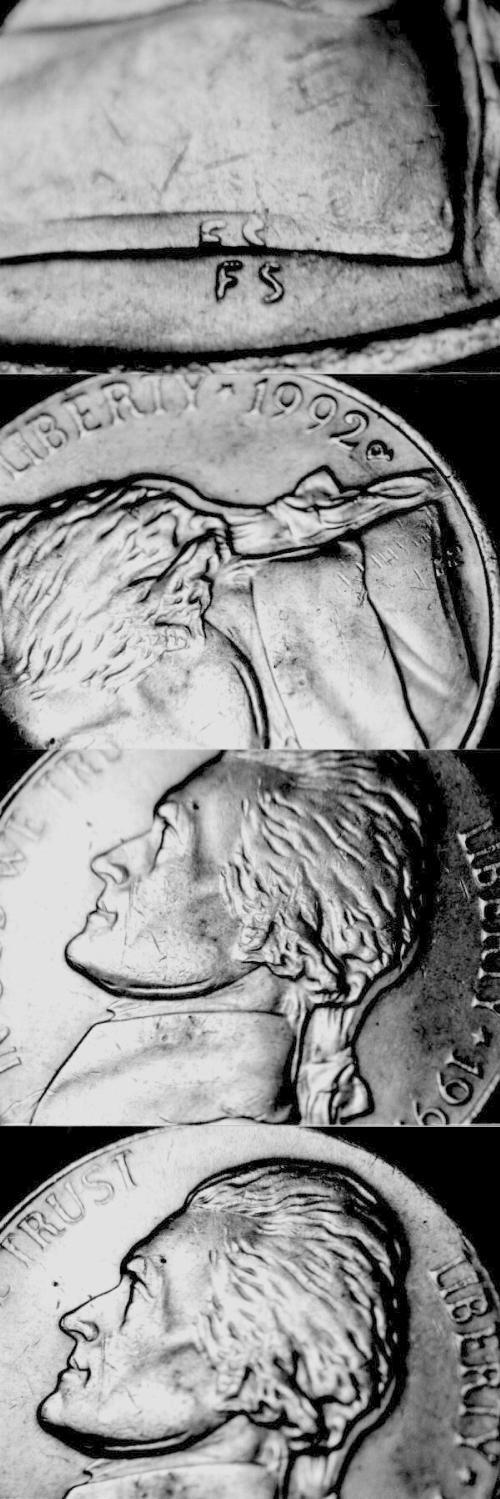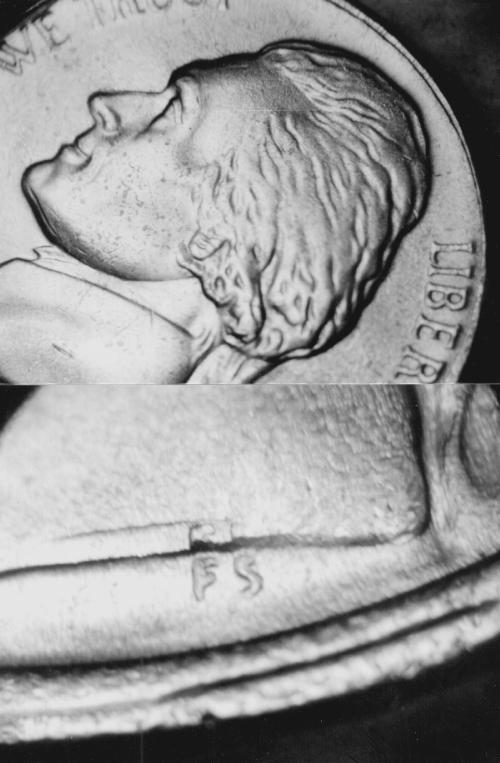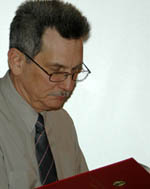|
|
|
|
1992-P Jefferson Nickel
With Unusual Strike Doubling
"Displaced Design-Strike Doubling"
by Ken Potter
Originally presented in my July 2002 Varieties
Notebook column featured in Coin World

Here is the example of "Displaced Design-Strike Doubling" that
was shown in Coin World
Three columns back we started this series (on forms of doubling that mimic doubled dies and repunching) with an examination of a fairly deceptive form of “Strike Doubling” that occurs when a design element is virtually split in half (thereby creating a doubled effect) as a portion of it is pushed down a sharp incline by die-bounce. In that example we showed the effects of Strike Doubling on the designer’s initials, FG, that were pushed down the slope of the truncation of Kennedy’s profile on a 1968-S proof half dollar.
In this column we look at another deceptive form of “Strike Doubling” that occurs when designer’s initials (or other design elements) isolated in the field of a coin in the close proximity to a larger design, are impressed into the larger design via die-bounce.
To review, Strike Doubling is one of the most common forms of doubling found on coins and is generally accepted to be a form of damage (to the coin) that occurs a split second after the strike. It is what others may refer to as “Machine Doubling,” “Mechanical Doubling,” “Shelf Doubling,” “Chatter” or a host of other terms used to describe the same effects. While the terms may vary amongst specialists, most agree that it is a very minor variation that occurs during the manufacturing process, that it is not a die variety and is too common to quote any extra value on. However, in the case of this column’s subject coin, not all specialists feel this particular form should be without value.
Michael Westcott sent in the 1992-P Jefferson nickel shown. The coin was first struck normally and then “struck” again via die-bounce with high points of the die, i.e., field areas, smashing into edges of design on the coin. In several areas about the portrait we see the typical flattened edges of design that we are accustomed to associating with Strike Doubling. Amongst them we see shelf-like doubling at the base of Jefferson’s bust. Interestingly, the force of flattening out this fairly wide shelf also raised a new set of Felix Schlag’s designer initials, FS, up on the lip of the base of the bust just to the NW of the normal set of initials. Generally, we associate Strike Doubling with the destruction of an image, (via flattening), but in this case it has actually formed a new image by raising it. This formation of an image independent the original gives researchers reason to reexamine the long-held rule of thumb that Strike Doubling adds no extra valued to a coin.
We sent images of the coin highlighted here to error-variety specialists, Bill Fivaz and J.T. Stanton (authors of The Cherrypickers’s Guide To Rare Die Varieties) and James Wiles, and John Wexler (well known variety coin attributers). We asked whether or not they felt this form of strike doubling should have value. Only Fivaz and Wexler responded to the inquiry and suggested that such a variation should have value. Fivaz suggested as least $25 for the one shown to which Wexler agreed. I concur. What do you think?

Here is a second example of Displaced Design-Strike Doubling
that Westcott found
For more information on this item click below:
Send email to: KPotter256@aol.com
Return To Ken Potter's Variety Vault
Visit Ken Potter's Educational Image Gallery

Free counters provided by Andale.